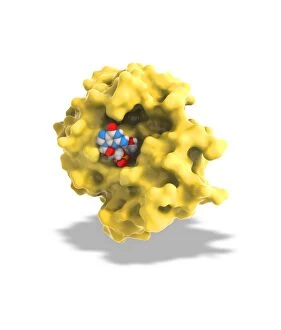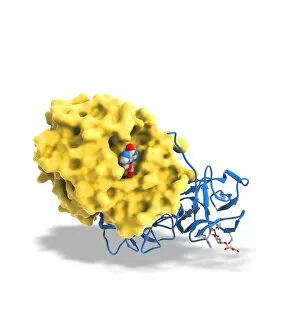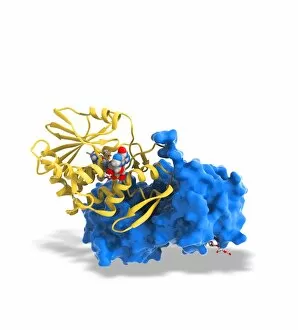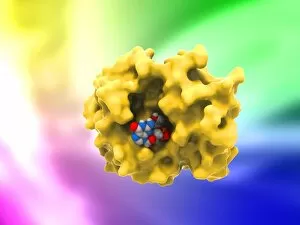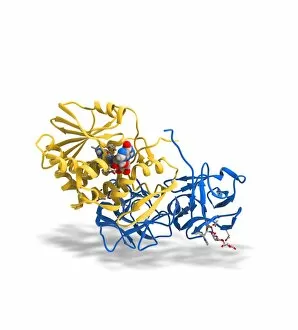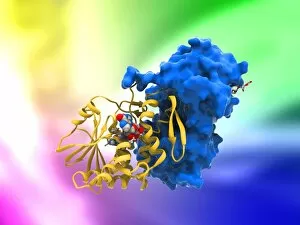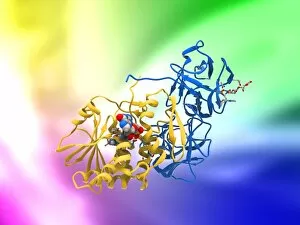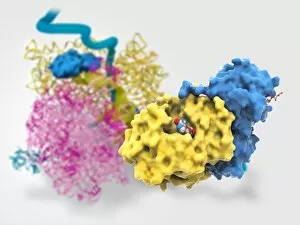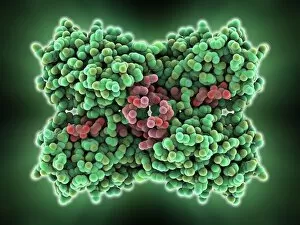Lectin Collection
"Lectin: Unveiling the Intricate World of Protein Interactions" In the realm of molecular biology
For sale as Licensed Images
Choose your image, Select your licence and Download the media
"Lectin: Unveiling the Intricate World of Protein Interactions" In the realm of molecular biology, lectins stand as fascinating entities that captivate scientists worldwide. With their ability to bind specifically to certain carbohydrates, these proteins play a crucial role in various biological processes. Among them, Ricin A-chain takes center stage with its intricate structure and potent toxicity. Artworks C017/3653, C017/3652, C017/3651, and C017/3650 depict the awe-inspiring beauty of the Ricin molecule. Its complex arrangement showcases how nature crafts an elegant yet deadly weapon. The accompanying artwork C017/3654 zooms in on Ricin A-chain itself – a key player responsible for disrupting protein synthesis within cells. But they are not limited to ricin alone; Concanavalin A (F006/9668) and Lactose binding protein (F006/9629) also deserve recognition for their unique abilities. These captivating molecules exhibit specific carbohydrate-binding properties that have been extensively studied by researchers seeking to unravel their secrets. The remaining artworks - C017/3656, C017/3655, and C017/3648 - continue to showcase different facets of the enigmatic Ricin molecule's structure. Each image provides a glimpse into its complexity while leaving us marveling at nature's ingenuity. Lastly, Plant agglutinin protein (C015 / 6107) emerges as another intriguing member of the lectin family. This plant-derived protein possesses remarkable agglutination properties that enable it to clump together cells or particles—a phenomenon both mesmerizing and scientifically significant. As we delve deeper into understanding lectins' roles in cellular interactions and disease mechanisms, these captivating images serve as reminders of our ongoing quest for knowledge. Lectins hold immense potential for therapeutic applications or even unlocking new avenues in drug development.

